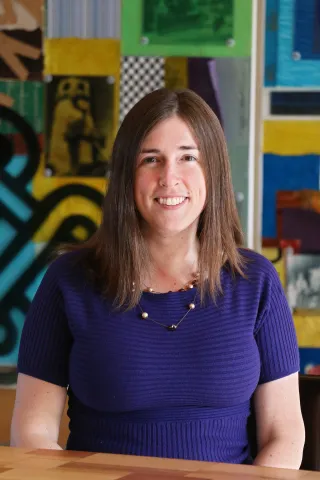So far in this series, we have taken a look at what U.S. Census Bureau data sources can tell us about LGBTQ+ adults in Minnesota. However, neither survey currently asks any questions about the sexual orientation or gender identity of children. To put together a picture of LGBTQ+ children in Minnesota, we looked at the Minnesota Student Survey, which is administered every three years and surveyed nearly 100,000 8th, 9th, and 11th graders in 2022.
A look at LGBTQ+ children and youth
In 2022, 24% of students taking the survey identified their sexual orientation as something other than “straight ,” and 13% identified as something other than cisgender (such as nonbinary, transgender, genderfluid, etc.).
LGBTQ+ youth in Minnesota express some similar feelings of stress as we see in LGBTQ+ adults. Thirty-one percent of LGBTQ+ students report being bullied weekly, compared to 17% of non-LGBTQ+ students. A larger share of LGBTQ+ students report depression and anxiety symptoms; 44% of LGBTQ+ students report feeling down, depressed, or hopeless more than half of days, compared to 15% of non-LGBTQ+ students. More than twice the share of LGBTQ+ students report not having an adult they can talk to about problems (21% and 10%, respectively).
However, LGBTQ+ students also show self-reflection, tolerance, and empathy. LGBTQ+ students report thinking about their purpose in life as often as their non-LGBTQ+ peers (60%). LGBTQ+ students are more likely than their peers to report accepting people who are different from themselves (96% and 87%, respectively) and being sensitive to the needs and feelings of others (71% and 63%, respectively).
Summary
Although no one data source gives us perfect information on the LGBTQ+ community in Minnesota, we can combine information from the American Community Survey, Household Pulse Survey, and Minnesota Student Survey to start to put together a picture of this community.
We hope this series has provided useful information on what we do and do not know about LGBTQ+ Minnesotans from existing data sources, and gives a framework for advocating for better data collection going forward.
Other articles and interactives
- Hidden no longer: Expanding our knowledge on sexual orientation and gender identity by Robert Santos, director, U.S. Census Bureau
- Sexual Orientation and Gender Identity in the Household Pulse Survey, U.S. Census Bureau
- What the 2020 census can--and can't--tell us about LGBTQ+ people, NPR
READ THE ENTIRE SERIES
Part 1: What current demographic tools can, and can’t, tell us about LGBTQ+ Minnesotans and their households
Part 2: Same-sex couples as self-identified in the American Community Survey
Part 3: LGBTQ+ adults as self-identified in the Household Pulse Survey
Part 4: LGBTQ+ youth and children as self-identified in the Minnesota Student Survey
Our thanks to Dr. Kay Simon, assistant professor at the University of Minnesota Department of Family Social Science, for reviewing this series.
